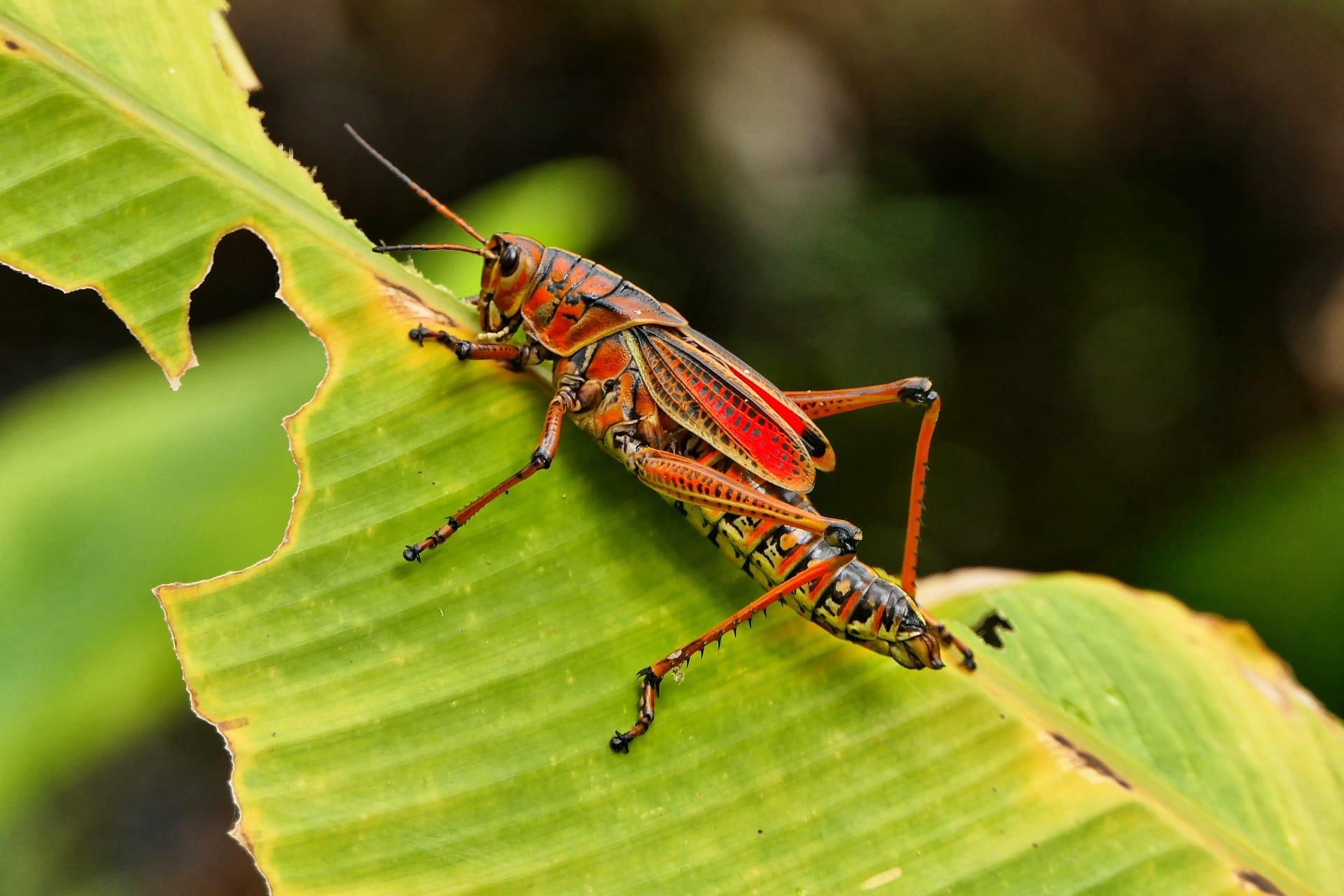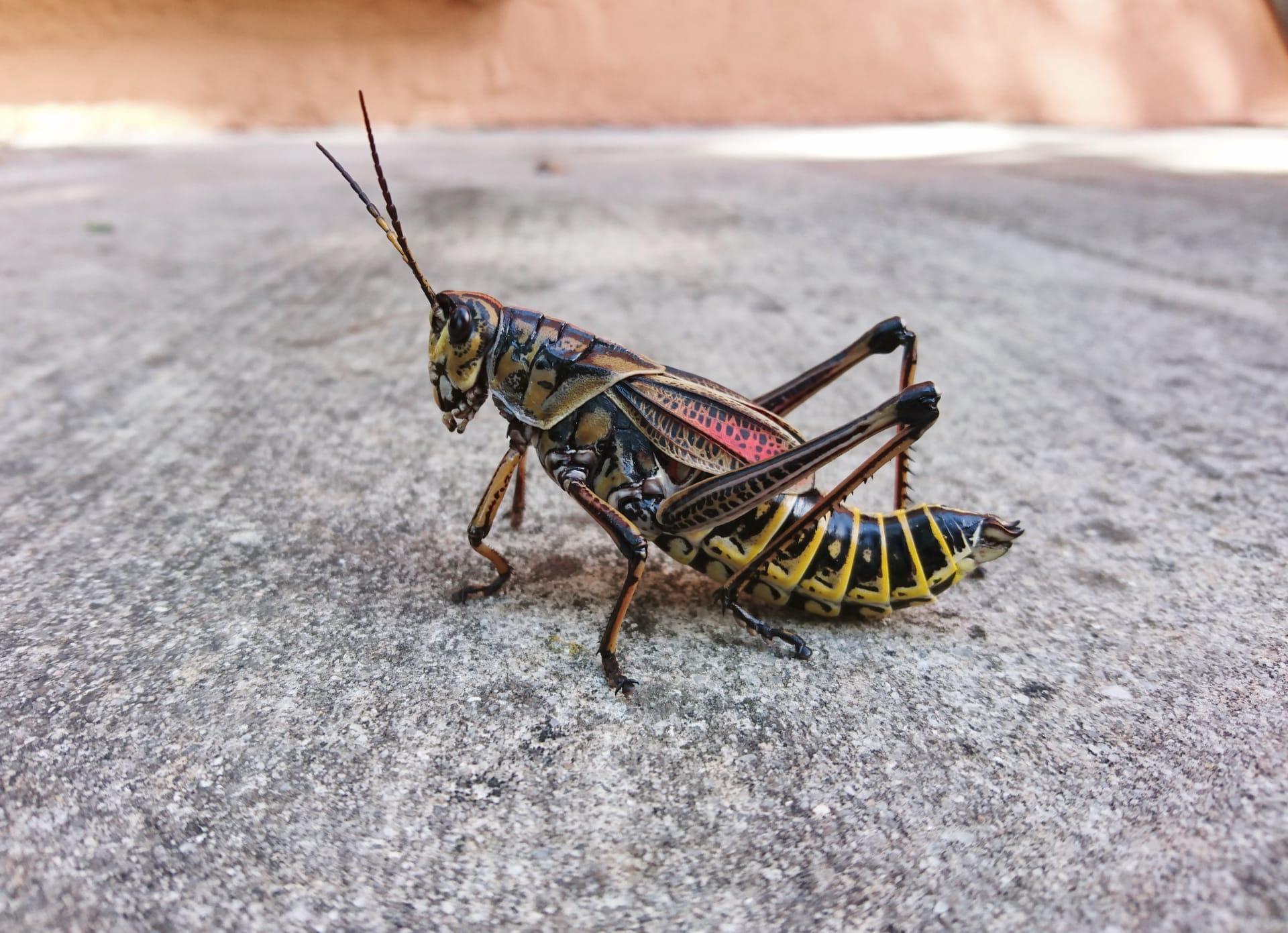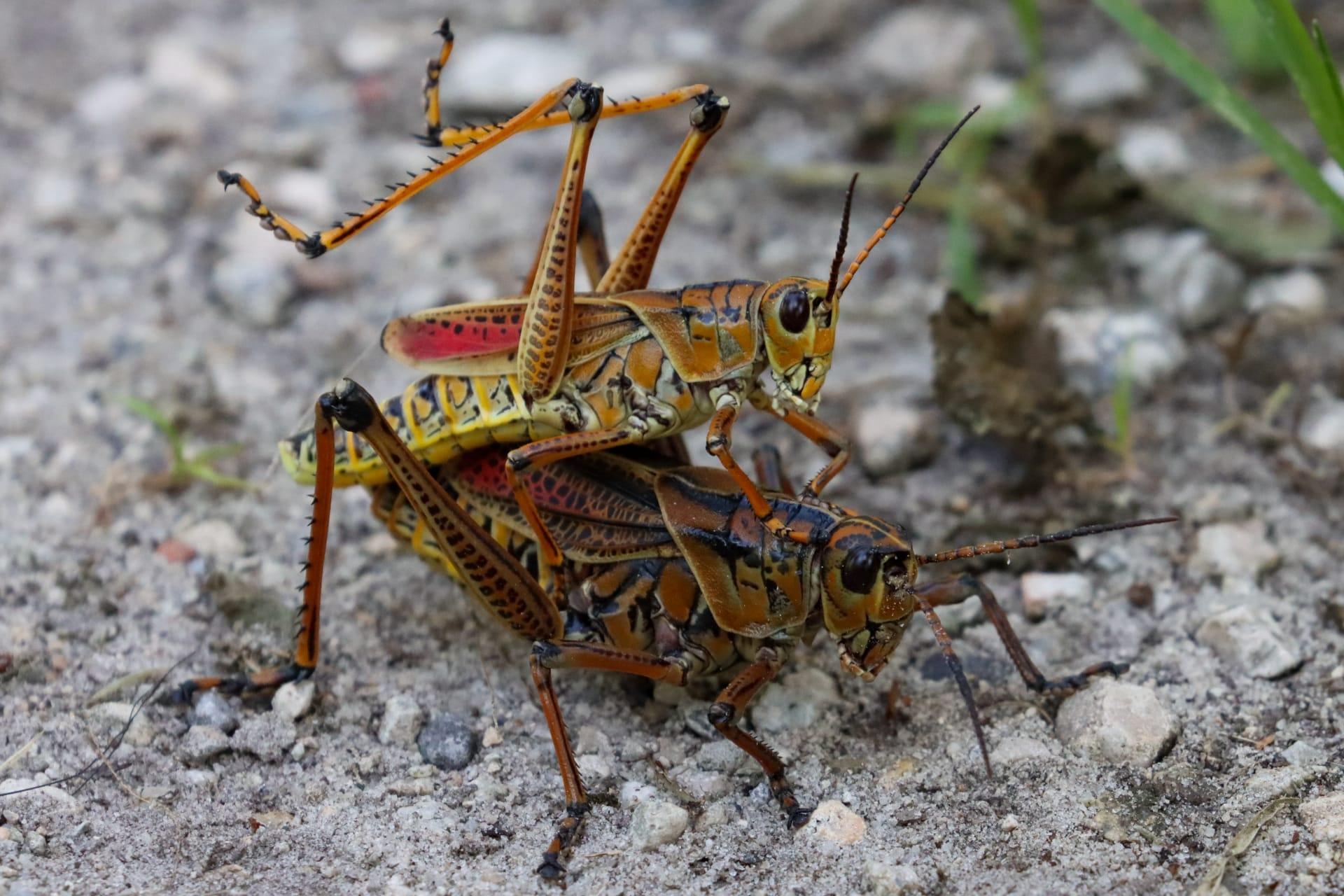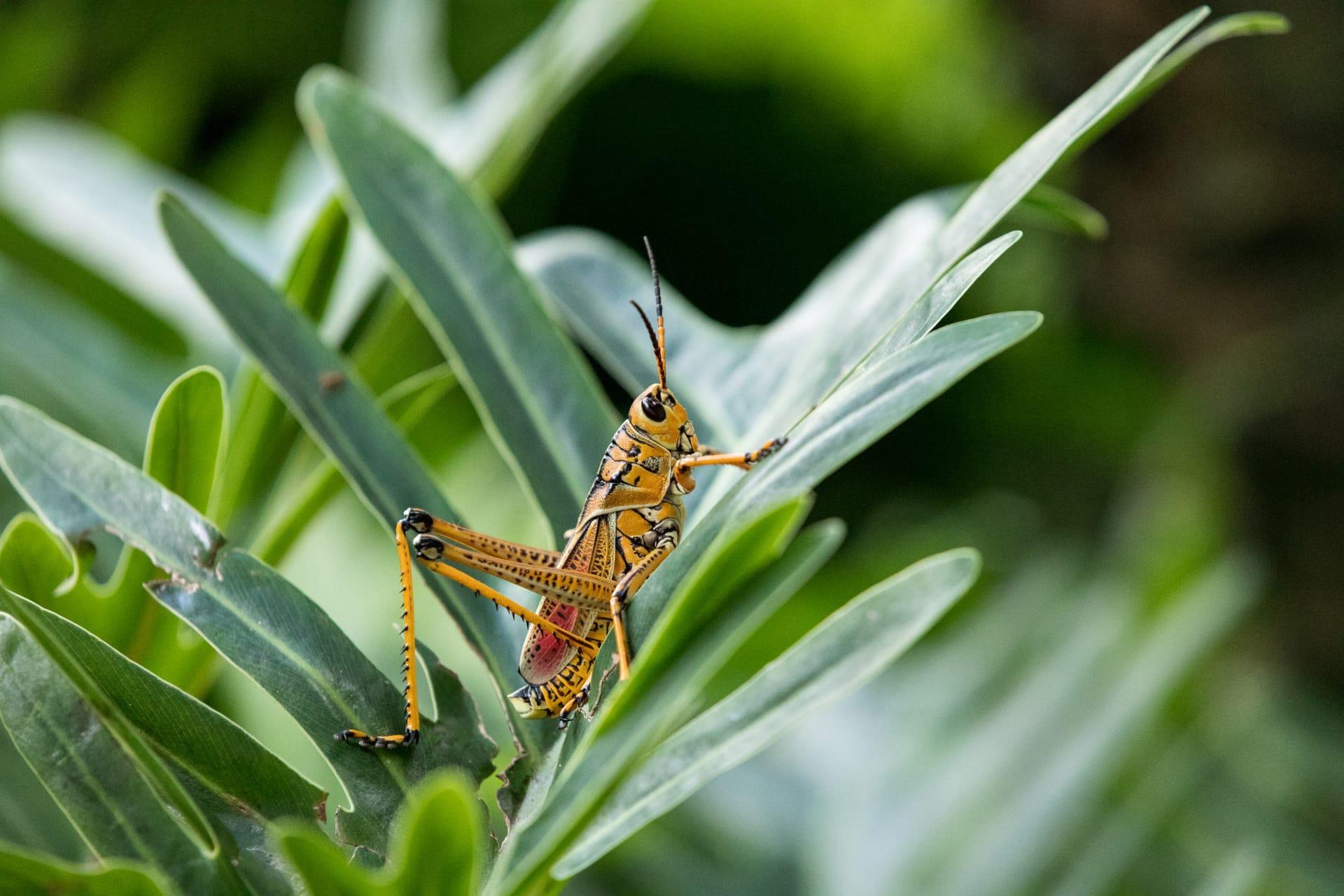Lubber Grasshopper Trivia
- Home /
- Trivia Question /
- Animal /
- Lubber Grasshopper Trivia
1
Question: What distinctive physical features make the Lubber Grasshopper stand out?
Answer: The Lubber Grasshopper is known for its large size and bright coloration. Adult Lubbers can grow up to 2.5 to 3 inches (6.35 to 7.62 cm) in length. They are typically black with yellow or red markings, making them quite conspicuous. Their hefty body and bright colors are a form of aposematic (warning) coloration, signaling predators of their toxicity.
Question: How does the diet of the Lubber Grasshopper contribute to its survival?
Answer: Lubber Grasshoppers are voracious eaters, primarily consuming plants. Their diet includes a wide variety of vegetation, but they show a particular fondness for certain toxic plants. Consuming these toxic plants doesn't harm the Lubbers but instead makes them toxic to predators. This dietary choice is a clever survival strategy, deterring potential threats through chemical defense.

2
Question: Is it true that Lubber Grasshoppers can cause significant agricultural damage?
Answer: Yes, it's true. Despite their slow movement and inability to fly, Lubber Grasshoppers can be agricultural pests. They often travel in large groups and can voraciously consume crops and ornamental plants, leading to significant damage. Their preference for young, tender plants makes them a particular threat to newly planted crops.
Question: Do Lubber Grasshoppers pose a danger to humans?
Answer: No, Lubber Grasshoppers are not dangerous to humans. They don't bite or sting, and their primary defense mechanism is their toxicity, which deters predators. However, this toxicity can be harmful if their bodies are ingested by pets or if humans come into contact with their excretions, which can cause skin irritation.

3
Question: How do Lubber Grasshoppers reproduce, and what is unique about their lifecycle?
Answer: Lubber Grasshoppers lay eggs in the soil, which hatch the following spring. A single female can lay up to 50 eggs in a pod, and she may produce several pods. What's unique is their lifecycle duration; it takes about a year for a Lubber to go from egg to adult. They undergo incomplete metamorphosis, meaning they don't have a pupal stage but grow through a series of nymph stages.
Question: What are the primary predators of Lubber Grasshoppers, given their toxicity?
Answer: Despite their chemical defenses, some predators have adapted to their toxicity. Birds, especially shrikes, are known to prey on Lubbers. These birds impale the grasshoppers on thorns or barbed wire to remove the toxic parts before consumption. Some rodents and reptiles are also known to eat them, indicating an evolutionary arms race between Lubbers and their predators.

4
Question: How do Lubber Grasshoppers communicate or interact with each other?
Answer: Lubber Grasshoppers are not particularly social insects, but they do use sound and physical movements to communicate, especially during mating rituals. Males produce a distinctive sound by rubbing their hind legs against their wings to attract females. They also engage in tactile communication through antennae contact and body movements during courtship.
Question: Can Lubber Grasshoppers fly, considering their large size?
Answer: Despite having wings, Lubber Grasshoppers are not capable of sustained flight due to their large size and weight. Their wings are relatively small and inefficient for flight. They do, however, use their wings for other purposes such as balance, courtship displays, and to aid in jumping.

5
Question: What role do Lubber Grasshoppers play in the ecosystem?
Answer: Lubber Grasshoppers play a significant role in their ecosystem. As herbivores, they help control the growth of vegetation and serve as a food source for various predators. Their feeding activity can also stimulate plant growth and contribute to the cycling of nutrients in the soil.
Question: How do Lubber Grasshoppers defend themselves against predators?
Answer: Lubber Grasshoppers have several defense mechanisms. Their bright coloration warns predators of their toxicity. When threatened, they can secrete a foamy substance from their thoracic glands, which contains toxins derived from their plant-based diet. This secretion is irritating to predators. Additionally, they can produce a hissing sound by forcing air out of their spiracles, which may startle potential threats.